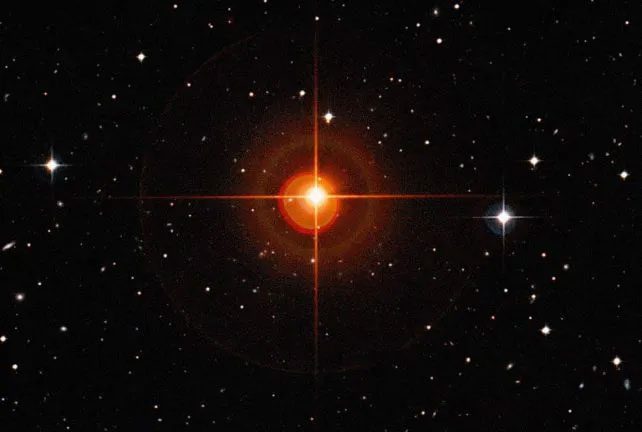These are black holes that formed at the dawn of the universe, infiltrating stars and silently hollowing them out.
A recent study published in the journal The Astrophysical Journal, led by Dr. Earl Bellinger from the Max Planck Institute for Astrophysics (Germany) and Yale University (USA), proposed a shocking theory about “parasitic black holes.”

A red giant star is a type of “dying” star that may harbor parasitic black holes – (Image: ESO).
Current astronomical theories accept three types of black holes: supermassive black holes at the centers of galaxies, mysterious intermediate-mass black holes, and stellar black holes.
Among these, the smallest stellar black holes are formed as a product of the “final death” of a massive star, which may become a neutron star after a neutron star phase.
However, according to Dr. Bellinger, there is another way that small black holes may be born.
According to Science Alert, a theory developed in the 1970s by the renowned theoretical physicist and cosmologist Stephen Hawking and expanded by other scientists suggests that extremely small black holes may have formed just one second after the Big Bang.
This occurred when matter in the nascent universe was hot and dense enough for regions of high density to collapse into black holes.
The only gap in this theory is: where did these primordial black holes go?
Primordial black holes seem to have vanished into thin air based on the evidence humanity has gathered about the evolution of the universe.
Dr. Bellinger believes there is a strong possibility that these black holes chose to be parasitic—not in a dead star remnant like a neutron star—but within living stars like our Sun.
These parasitic black holes would gradually erode the insides of stars. Eventually, that star would no longer sustain itself through nuclear fusion but rather from the accretion disk of the parasitic black hole itself.
Ultimately, this voracious entity would lead to the star’s death, causing it to collapse, potentially into many smaller black holes.
According to the new study, direct evidence of these parasitic black holes could be identified. When a star transitions to a phase sustained by a black hole, its light would change.
However, how that change would manifest and the methods to identify it… remain issues that need to be resolved. Dr. Bellinger stated that they will address this in future research.


















































